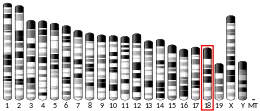| SCGB3A2 | |||||||||||||||||||||||||||||||||||||||||||||||||||
|---|---|---|---|---|---|---|---|---|---|---|---|---|---|---|---|---|---|---|---|---|---|---|---|---|---|---|---|---|---|---|---|---|---|---|---|---|---|---|---|---|---|---|---|---|---|---|---|---|---|---|---|
| Identifiers | |||||||||||||||||||||||||||||||||||||||||||||||||||
| Aliases | SCGB3A2, LU103, PNSP1, UGRP1, pnSP-1, secretoglobin family 3A member 2 | ||||||||||||||||||||||||||||||||||||||||||||||||||
| External IDs | OMIM: 606531 MGI: 2153470 HomoloGene: 14274 GeneCards: SCGB3A2 | ||||||||||||||||||||||||||||||||||||||||||||||||||
| |||||||||||||||||||||||||||||||||||||||||||||||||||
| |||||||||||||||||||||||||||||||||||||||||||||||||||
| |||||||||||||||||||||||||||||||||||||||||||||||||||
| |||||||||||||||||||||||||||||||||||||||||||||||||||
| Wikidata | |||||||||||||||||||||||||||||||||||||||||||||||||||
| |||||||||||||||||||||||||||||||||||||||||||||||||||
Secretoglobin family 3A member 2 is a protein that in humans is encoded by the SCGB3A2 gene.[5]
References
- 1 2 3 GRCh38: Ensembl release 89: ENSG00000164265 - Ensembl, May 2017
- 1 2 3 GRCm38: Ensembl release 89: ENSMUSG00000038791 - Ensembl, May 2017
- ↑ "Human PubMed Reference:". National Center for Biotechnology Information, U.S. National Library of Medicine.
- ↑ "Mouse PubMed Reference:". National Center for Biotechnology Information, U.S. National Library of Medicine.
- ↑ "Entrez Gene: SCGB3A2 secretoglobin, family 3A, member 2".
Further reading
- Kimura S, Hara Y, Pineau T, et al. (1996). "The T/ebp null mouse: thyroid-specific enhancer-binding protein is essential for the organogenesis of the thyroid, lung, ventral forebrain, and pituitary". Genes Dev. 10 (1): 60–9. doi:10.1101/gad.10.1.60. PMID 8557195.
- Wattiez R, Hermans C, Cruyt C, et al. (2001). "Human bronchoalveolar lavage fluid protein two-dimensional database: study of interstitial lung diseases". Electrophoresis. 21 (13): 2703–12. doi:10.1002/1522-2683(20000701)21:13<2703::AID-ELPS2703>3.0.CO;2-W. PMID 10949149. S2CID 38601731.
- Niimi T, Munakata M, Keck-Waggoner CL, et al. (2002). "A Polymorphism in the Human UGRP1 Gene Promoter That Regulates Transcription Is Associated with an Increased Risk of Asthma". Am. J. Hum. Genet. 70 (3): 718–25. doi:10.1086/339272. PMC 384948. PMID 11813133.
- Porter D, Lahti-Domenici J, Torres-Arzayus M, et al. (2003). "Expression of high in normal-1 (HIN-1) and uteroglobin related protein-1 (UGRP-1) in adult and developing tissues". Mech. Dev. 114 (1–2): 201–4. doi:10.1016/S0925-4773(02)00056-4. PMID 12175512. S2CID 1770009.
- Strausberg RL, Feingold EA, Grouse LH, et al. (2003). "Generation and initial analysis of more than 15,000 full-length human and mouse cDNA sequences". Proc. Natl. Acad. Sci. U.S.A. 99 (26): 16899–903. Bibcode:2002PNAS...9916899M. doi:10.1073/pnas.242603899. PMC 139241. PMID 12477932.
- Bin LH, Nielson LD, Liu X, et al. (2003). "Identification of uteroglobin-related protein 1 and macrophage scavenger receptor with collagenous structure as a lung-specific ligand-receptor pair". J. Immunol. 171 (2): 924–30. doi:10.4049/jimmunol.171.2.924. PMID 12847263.
- Clark HF, Gurney AL, Abaya E, et al. (2003). "The Secreted Protein Discovery Initiative (SPDI), a Large-Scale Effort to Identify Novel Human Secreted and Transmembrane Proteins: A Bioinformatics Assessment". Genome Res. 13 (10): 2265–70. doi:10.1101/gr.1293003. PMC 403697. PMID 12975309.
- Srisodsai A, Kurotani R, Chiba Y, et al. (2005). "Interleukin-10 induces uteroglobin-related protein (UGRP) 1 gene expression in lung epithelial cells through homeodomain transcription factor T/EBP/NKX2.1". J. Biol. Chem. 279 (52): 54358–68. doi:10.1074/jbc.M405331200. PMID 15485815.
- Gerhard DS, Wagner L, Feingold EA, et al. (2004). "The Status, Quality, and Expansion of the NIH Full-Length cDNA Project: The Mammalian Gene Collection (MGC)". Genome Res. 14 (10B): 2121–7. doi:10.1101/gr.2596504. PMC 528928. PMID 15489334.
This article is issued from Wikipedia. The text is licensed under Creative Commons - Attribution - Sharealike. Additional terms may apply for the media files.



